Osage Orange
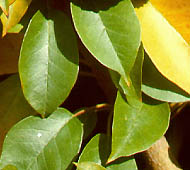
Leaf Characteristics
- broad, flat
- simple
- not lobed
- smooth margins, entire
- alternate
- without needle-like bristles
- not heart-shaped
- widest toward base
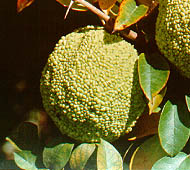
Fruit Characteristics
- other fruit (not cone, winged, acorn, or in pod or capsule)
- tightly packed seeds
- seeds in capsules, packed in non-burlike balls
- seed balls soft, green
Osage Orange
Maclura pomifera
As the tree develops, its bark becomes ash-brown or dark orange-brown. It develops irregular fissures and breaks into broad, scaly ridges. Although not native to Ohio, through plantings the Osage-Orange has become resident to most counties. This tree often has been used in growing hedges and fencerows. The sharp spines that arm its twigs add to the tree's usefulness in making restraining, "natural" fences. The strong, durable wood has been used for fence posts, small sturdy objects, and rustic furniture. Squirrels eat seeds from the fruit in winter.
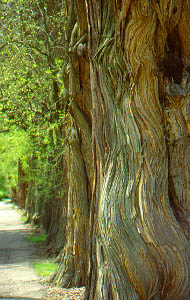 Tree Size
height 10' - 50
diameter 1' - 4'
Tree Size
height 10' - 50
diameter 1' - 4'
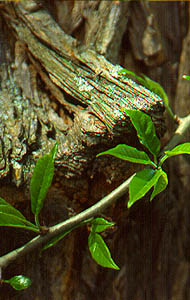 Bark
Bark
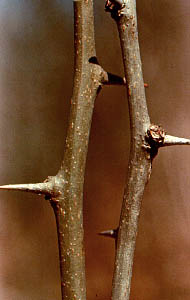 Twig and Buds
Twig and Buds 